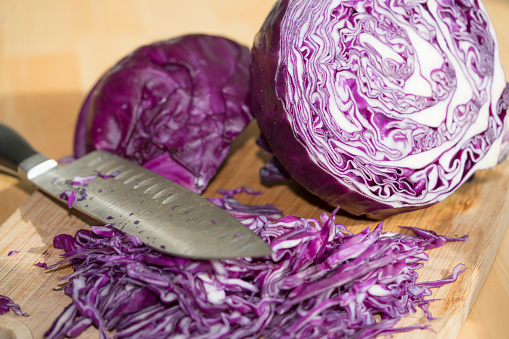
Cabbage - A Calcium Option You May Ignore
By: Joy Stephenson-Laws, J.D., Founder
For years, conventional wisdom has been that dairy is the king when it comes to foods rich in calcium. And while it is undeniable that milk, cheese, and yogurt are jampacked with this important mineral, they are not the only game in town!
Consider, for example, the common and humble cabbage.
It turns out that this cruciferous vegetable, the key ingredient of that picnic staple coleslaw, is a calcium powerhouse. It also provides a wealth of other minerals needed to help us get and stay healthy.
Cabbage, since it is leafy, is often confused with lettuce since they do look somewhat alike. But the similarity ends there. It is a member of the same plant species as cauliflower, kale, broccoli, Brussels sprouts, collard greens, and bok choy. You could consider them all to be cabbage’s cousins. It comes in red, white, and green varieties. Most cabbages that you will find in the produce section of your local market weigh somewhere between one and two pounds.

In addition to calcium, which is critical for strong bones as well as helping your heart, muscles, and nerves function properly, cabbage is a good source of the following minerals:
• Iron
• Magnesium
• Phosphorus
• Potassium
• Sodium
• Zinc
• Copper
• Manganese
• Selenium
• Fluoride
All these minerals play a crucial role in keeping us healthy. For example, magnesium is required for more than 300 biochemical reactions in our bodies, manganese is important for growing bones and cartilage (connective tissue in the body), and potassium helps keep blood pressure under control.
We detail many of these minerals in our book - Minerals, The Forgotten Nutrient.
Cabbage also has more than 80 percent of the RDI (recommended daily intake) of vitamin K, more than half the RDI of vitamin C, and 10 percent of the RDI of folate. It is a good source of antioxidants, which help protect our cells from damage by free radicals. And this vegetable also has a good amount of fiber, which helps keep our digestive systems healthy. It also may increase the number of “good” bacteria in our gut. Cabbage may also contribute to cardiovascular health by helping to control both blood pressure and cholesterol.
How to enjoy Cabbage
In addition to the ubiquitous coleslaw and sauerkraut, there are many ways to enjoy cabbage and incorporate it into your and your family’s diet. Here are some ideas, all of which are easy to prepare, require minimal time and will go easy on your food budget.
Stuffed Cabbage: Depending on where you grew up, you may also know them as cabbage rolls. It seems that every family has their own “secret recipe.” But the basic concept is the same – place your filling (often ground meat) inside boiled cabbage leaves, roll them up, and place them in a pot of broth with loose cabbage and cook. Many people also add tomatoes, spinach, or other fresh produce to make a hearty stew. Other recipes call for adding rice to the filling. Serve it hot with a side vegetable and you have a nutritionally balanced meal. A slow cooker is ideal for stuffed cabbage since you can put all the ingredients together in the morning and have dinner ready at supper time.
Jamaican Steamed Cabbage: Growing up in Jamaica, this was one of my favorites. I know that many people consider it a side dish, but it is filling enough to be a full meal at lunch, for example. Given that it also includes bell peppers, scallions, carrots, and onions, it’s almost like warm salad or light soup. You can also add chicken, fish, or another protein. I usually add some hot peppers since I like my cabbage with a kick, but that is totally optional. As with stuffed cabbage, you can prepare this dish in your slow cooker.
Cabbage Smoothie: Ok, I will admit the first time I heard about this I did raise an eyebrow. But it turns out that cabbage is a great foundation for a healthy, refreshing smoothie. One recipe that I particularly like includes red/purple cabbage, Greek yogurt, berries (one type alone or a variety), orange, and banana. Just put it all in a blender and in a few seconds your smoothie is ready. During the summer, you can add ice to make it more refreshing. If you would like it a little sweeter, add some raw honey or agave.
(For more information about cabbage, read here).
Enjoy your healthy life!
The pH professional health care team includes recognized experts from a variety of health care and related disciplines, including physicians, attorneys, nutritionists, nurses, and certified fitness instructors. This team also includes the members of the pH Medical Advisory Board, which constantly monitors all pH programs, products, and services. To learn more about the pH Medical Advisory Board, click here.







